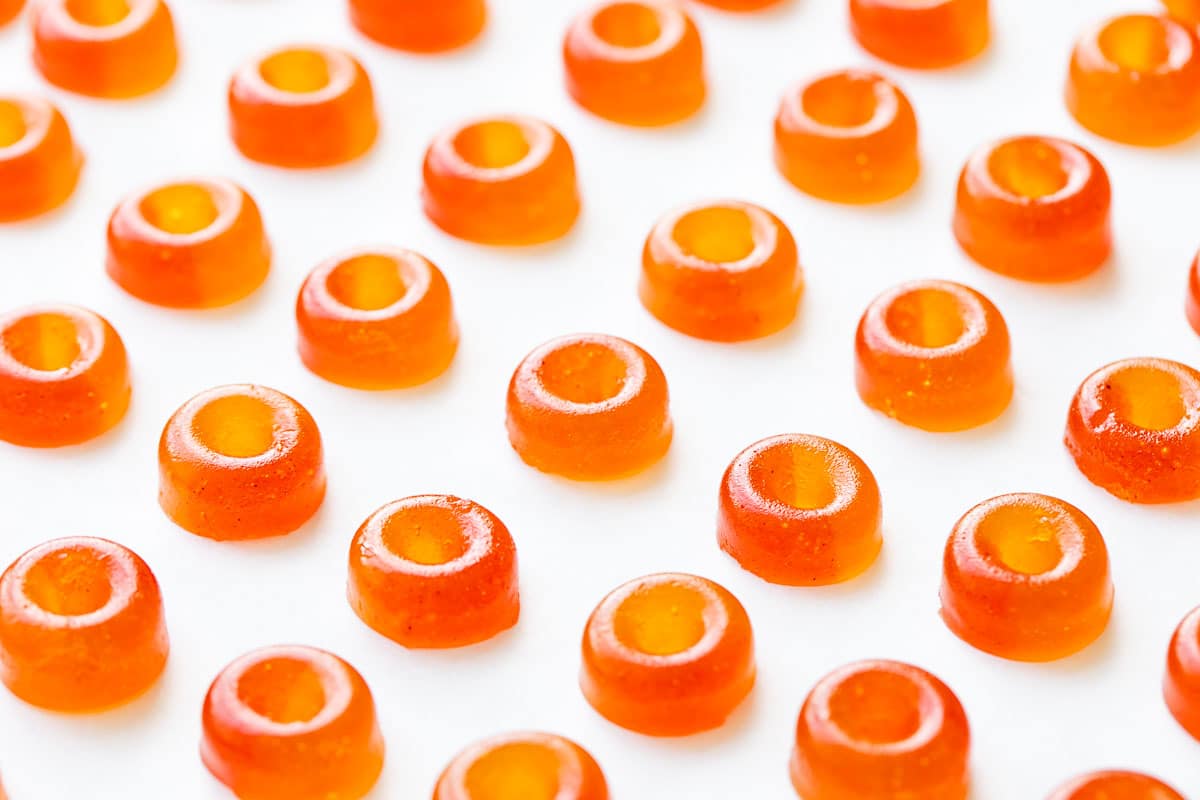Heart Sablé Cookies
Right after I got married, twenty-five years ago, I bought Rose Levy Beranbaum’s seminal Cake Bible. It felt like one of those books that you should own if you were serious about food.… Read more The post Heart Sablé Cookies...

Right after I got married, twenty-five years ago, I bought Rose Levy Beranbaum’s seminal Cake Bible. It felt like one of those books that you should own if you were serious about food. Beranbaum is a legend in the baking world and has since authored a dozen award-winners, and back then I’d spend my kidless weekend mornings making lemon poppy seed pound cake and chocolate bread. (Because of her, I made a special trip to a baking supply store to buy my first fluted tube pan.) So, when I got my hands on her newest collection, The Cookie Bible (out this week!), I was pumped. I decided it was a good excuse to bake something special for my daughter, a college junior, who I was going to see later that week.
The big question: Which cookie?
Joanna, who also had a copy, pored over the pages with her boys and suggested the Cranberry Chocolate Chippers, Fudge Pudgy Brownies, Peanut Butter and Jelly Buttons, the Ted Lasso-esque Scottish Shortbread. The book has a nice mix of classics and twists on classics, and I also eyeballed the Coconut Snowball Kisses, Double Ginger Molasses Cookies, and Caramel Surprise Snickerdoodles.
But I’m a purist when it comes to baking — another way of saying I am not super adventurous — so I ended up making a batch of classic sablés, which also happen to be my daughter’s favorite. Sablé is French for “sandy” and, according to Beranbaum, “the French tradition is to add the smallest amount of flour possible to make the most buttery of cookies…This results in a wondrously fragile cookie.” Phoebe loved them. They were delicately spiked with walnuts and, importantly, easy to shape into hearts.
Walnut Sablé Hearts
Adapted slightly from The Cookie Bible, by Rose Levy Beranbaum.
To make sablés without nuts, omit the walnuts and add an additional 2 tablespoons flour.
8 tablespoons (1 stick) unsalted butter
2 tablespoons walnut halves
1 (to 2) large egg yolks (1 tablespoon, plus 1/2 teaspoon)
1 teaspoon vanilla extract
1/4 cup granulated sugar
1/4 cup powdered sugar (lightly spooned into the cup), minus 2 teaspoons
1 cup, plus 2 tablespoons all-purpose flour
1/8 teaspoon fine sea salt
PREHEAT THE OVEN
Twenty minutes or longer before baking, set an oven rack at the middle level. Set the oven at 350°F.
MISE EN PLACE
Thirty minutes to 1 hour ahead, cut the butter into tablespoon-size pieces. Set on the counter to soften.
Toast the walnuts: Spread the walnuts evenly on a baking sheet and bake for 5 minutes. Turn the walnuts onto a clean dish towel and roll and rub them around to loosen the skins. Discard any loose skins and cool the nuts completely.
Into a 1 cup glass measure with a spout, measure the egg yolk. Whisk in the vanilla extract. Cover tightly with plastic wrap and set on the counter.
MAKE THE DOUGH
1. In the bowl of a 5-cup food processor, process the walnuts and sugars until fine.
2. In a small bowl, whisk together the flour and salt.
3. With the motor running, add the butter to the processor one piece at a time, processing until smooth and creamy. Scrape down the sides of the bowl as needed.
4. Add the egg yolk mixture and pulse until incorporated, scraping down the sides of the bowl as needed.
5. Add the flour mixture in two parts and pulse until incorporated. Scrape down the sides of the bowl and continue to pulse until all the flour is incorporated and the dough is in crumbly pieces.
6. Transfer the dough to a double layer of plastic wrap and use the plastic wrap and the heel of your hand to knead the dough until it is in one smooth piece.
7. Flatten the dough in plastic wrap and refrigerate for 30 minutes to 1 hour, or until firm enough to roll.
(The dough can be refrigerated for up to 3 days; it will then need to be softened at room temperature for 30 minutes to an hour and kneaded lightly until malleable enough to roll.)
ROLL AND CUT THE DOUGH
8. Roll out the dough to a thickness of 1⁄8 inch. Flour both sides of the dough as needed to prevent sticking. If the dough softens, slide it onto a cookie sheet and refrigerate for about 15 minutes, or until firm enough to make the cutouts. The dough may crack slightly in places, especially if it is too cold, but when you reknead the scraps, it will be smooth and not require much, if any, extra flour.
9. Cut out the dough with heart cookie cutters (or your preferred shape) and remove the scraps to reroll. Place the cut-outs about 1⁄2 inch apart on a cookie sheet.
10. Knead together the scraps and shape them into a disc. You can reroll them right away or chill them, wrapped in plastic wrap, if too soft. Continue with the remaining scraps until you have 18 cookies on the cookie sheet.
BAKE THE COOKIES
11. Bake the cookies for 5 minutes. Rotate the cookie sheet halfway around. Continue baking for 5 to 7 minutes, or until the cookies puff slightly and feel firm to the touch. They should just be beginning to brown at the edges and deepen slightly in color.
COOL THE COOKIES
12. Set the cookie sheet on a wire rack and let the cookies cool completely.
Enjoy!
P.S. Coming home dinners and a cookbook that Anton and Toby love.
54 COMMENTS

 ValVades
ValVades 


































